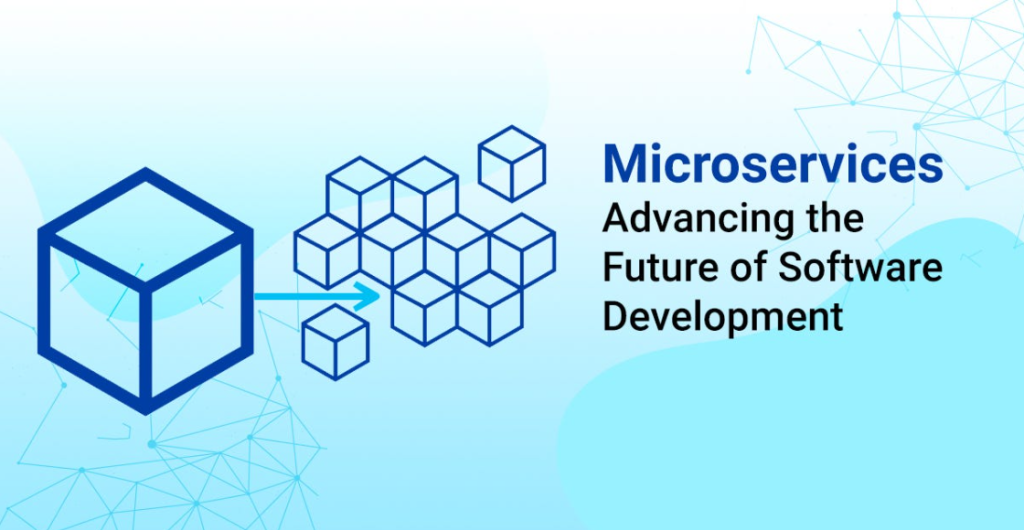
Here’s a comprehensive post titled “Why Microservices Architecture is the Future of Software Development” with expanded content for each section:
The Rise of Microservices Architecture
Over the past decade, the way software is developed and deployed has undergone a major transformation. One of the key shifts has been the adoption of microservices architecture, which has proven to be a more efficient, scalable, and flexible way to build modern applications. Unlike traditional monolithic architectures, where the entire application is tightly coupled and deployed as one large unit, microservices break applications into smaller, independent services that work together to deliver functionality.
This architecture is rapidly gaining popularity across industries because of its ability to address the challenges posed by growing software complexity, scalability issues, and the demand for faster development cycles. In this post, we’ll explore why microservices architecture is seen as the future of software development, highlighting its major features, benefits, and why it is the go-to solution for modern software.
Key Features of Microservices Architecture
- Decentralization: Microservices break down applications into smaller, loosely coupled services, each with its own responsibilities.
- Independent Deployments: Each service can be deployed independently, allowing for faster updates and improved resilience.
- Scalability: Microservices can be scaled individually based on demand, optimizing resource usage.
- Technology Agnostic: Each microservice can be built with a different technology stack, allowing for flexibility in choosing the right tool for each task.
- Fault Isolation: Failures in one service do not affect others, which enhances the overall system’s reliability.
1. Scalability and Flexibility in Microservices
One of the most significant advantages of microservices is their scalability. As your application grows, you can scale each microservice independently, which allows for a much more efficient use of resources compared to traditional monolithic systems.
Benefits of Scalability in Microservices
- Independent Scaling: Unlike monolithic applications, where the entire application needs to be scaled, microservices allow you to scale only the parts of the application that experience high demand.
- Optimized Resource Utilization: You can allocate resources based on each service’s demand, which helps reduce operational costs.
- Performance Management: Scaling services independently ensures that performance issues in one service won’t impact others, providing better overall system performance.
- Auto-Scaling: Many cloud providers (e.g., AWS, Azure) allow for automated scaling of individual microservices based on traffic, further optimizing resource allocation.
Microservices allow businesses to be more agile by adding new features or scaling specific components without affecting the entire system. This flexibility makes microservices architecture highly valuable in the fast-paced environment of modern software development.

2. Faster Development Cycles and Time-to-Market
In today’s competitive market, software development teams are under constant pressure to deliver features quickly while maintaining high levels of quality. Microservices enable faster development and deployment cycles, which directly contribute to faster time-to-market for new features and updates.
How Microservices Improve Development Speed
- Parallel Development: Different teams can work on different services simultaneously, improving the speed of development and allowing teams to focus on specific areas of functionality.
- Independent Deployments: Each service can be deployed independently, enabling faster rollouts of new features or bug fixes without the need for long release cycles.
- Continuous Integration and Continuous Deployment (CI/CD): Microservices architecture is well-suited for CI/CD pipelines, as each service can be continuously integrated, tested, and deployed independently.
- Decoupling Dependencies: By reducing the number of interdependencies between components, microservices make it easier to implement changes and updates without impacting the entire system.
With microservices, software development teams can release features more quickly, respond to market changes faster, and deliver value to customers more rapidly.
3. Enhanced Fault Isolation and Resilience
One of the key challenges in large monolithic applications is fault tolerance. If one part of a monolithic application fails, it can bring down the entire system. In contrast, microservices offer enhanced resilience through fault isolation.
How Microservices Improve Resilience
- Isolation of Failures: In a microservices architecture, each service is independent. If one service fails, it does not affect other services, meaning the system as a whole remains operational.
- Automatic Failover: Microservices can be designed with automatic failover mechanisms, which quickly redirect traffic to healthy services or replicas in case of failures.
- Service Redundancy: You can deploy multiple instances of a service to ensure redundancy and improve the overall availability of the system.
- Graceful Degradation: When part of the system fails, microservices can be designed to continue providing partial functionality instead of causing a complete outage.
The fault tolerance and resilience offered by microservices make them a more reliable choice for building complex, mission-critical applications.
4. Technology Flexibility and Autonomy
Microservices architecture offers the advantage of technology flexibility. Each microservice can be built with the most suitable technology for the task at hand, and each team can work independently on their respective services.
How Technology Flexibility Benefits Microservices
- Language and Framework Independence: Each microservice can be developed using the programming language or framework best suited for its requirements. For example, a data processing service might use Python, while a high-performance API could use Go.
- Choice of Databases: Microservices can each have their own database, tailored to their specific needs. For instance, you can use SQL for transactional data and NoSQL for high-performance, unstructured data.
- Faster Innovation: Teams can experiment with new technologies or upgrade services independently without affecting the overall system, encouraging innovation and reducing the risk of breaking the entire application.
- Service Evolution: Microservices allow for continuous evolution of individual services without disrupting others, ensuring that each service can keep up with the latest technology trends.
The autonomy of services in a microservices architecture leads to better alignment of technology choices with business goals, providing a flexible and adaptable solution.
5. Microservices and Cloud-Native Applications
Cloud-native development is closely tied to microservices architecture. Microservices are an excellent fit for cloud-native applications because they allow for dynamic scaling, automated deployments, and better resource management, all of which are key advantages of cloud computing.
How Microservices Fit into the Cloud-Native Ecosystem
- Elastic Scalability: Microservices work seamlessly with cloud platforms to provide elastic scalability. Cloud-native microservices can automatically scale in response to demand.
- Containerization: Microservices are often packaged in containers, making them portable and easy to deploy across various cloud platforms using Kubernetes or Docker.
- Service Discovery and Load Balancing: Cloud-native environments often rely on service discovery and load balancing to route requests to the appropriate microservices, ensuring efficient use of resources.
- Infrastructure as Code (IaC): Microservices architecture is well-suited for Infrastructure as Code, allowing for automated provisioning and management of cloud resources.
Microservices allow companies to take full advantage of the benefits offered by cloud computing, including improved scalability, cost-efficiency, and flexibility.
6. The Future of Software Development: Microservices as the Standard
As software systems continue to grow in complexity and scale, microservices will likely become the default architecture for modern applications. The growing adoption of cloud technologies, containerization, and DevOps practices makes microservices more accessible and appealing than ever before.
Why Microservices Are the Future
- Adoption of Cloud Technologies: As more organizations move to the cloud, microservices will remain the best architecture to build scalable, resilient, and cloud-native applications.
- Support for DevOps and CI/CD: Microservices fit well with DevOps practices and CI/CD pipelines, facilitating faster, more efficient software development.
- Focus on Business Capabilities: Microservices enable organizations to focus on business capabilities by decentralizing development and allowing teams to work independently on specific services.
- Innovation and Continuous Improvement: Microservices allow for continuous improvement of individual services, enabling organizations to quickly adapt to changing business needs or emerging technologies.
With the increasing need for scalable, flexible, and resilient systems, microservices architecture is poised to become the standard for software development in the future.
Why Microservices Is the Future of Software Development
Microservices architecture offers a wide range of benefits, from scalability and flexibility to enhanced fault tolerance and technology independence. It allows organizations to build applications that are more resilient, easier to maintain, and quicker to scale. As cloud computing, DevOps, and containerization continue to evolve, microservices will play an even more prominent role in the future of software development.
By adopting microservices, companies can better meet the demands of modern, complex applications, respond faster to changing business needs, and ensure their systems can scale effectively in an ever-changing technology landscape.
